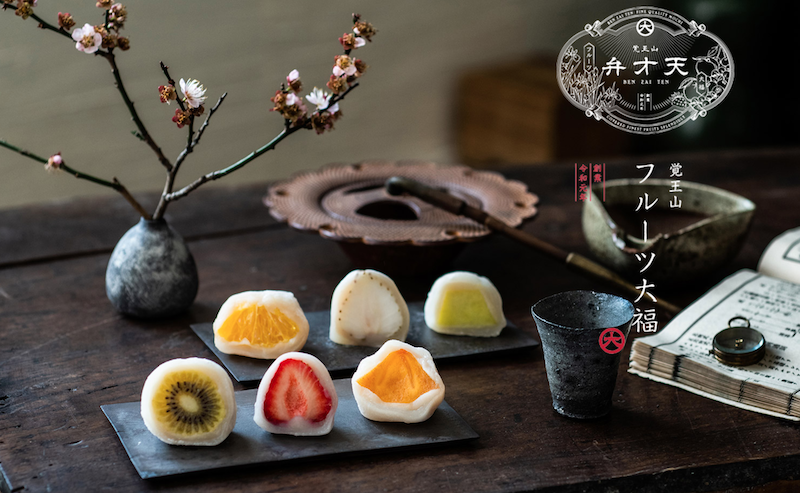Dec 23, 2022
Making Mochi – Fun for Kids and Big Kids Alike
When I first heard about mochi, my heart went out to Japan’s children. You see, where I’m from, sweets really are just that: sweet. And so, when I was told that one of the most popular forms of confectionaries in Japan was a cake made from rice and typically stuffed with beans, I couldn’t help but think about what I would have made of that when I was a kid. Not all too impressed, I can tell you. That all changed once I got to try some of the stuff. It was sweet, delicate, and oh, so chewy. But it is at its best when it is freshly made.
There are two ways to make this classic Japanese dish, and while both can be lots of fun, one requires some old-fashioned technique and a bit of cumbersome lo-fi tech, and the other way is… well… decidedly easier. We’ll start with the traditional way.
Traditional Mochi Making
The traditional way to make mochi is quite labor-intensive and requires some heavy-duty hardware. It is made using a type of rice called ‘mochigome,’ a sticky, glutinous rice that is soaked overnight and then steamed in a wooden box called a ‘seirou.’ Once ready, the rice is placed with some water in an ‘usu,’ a mortar so large that it may take two people to maneuver it.
Next comes the fun part. Using a heavy wooden mallet called a ‘kine,’ the mochi is hammered and pounded until it comes to resemble the sticky treat, after which it can be coated with various flavors such as ‘kinako,’ soy sauce, and wasabi, or it can be stuffed with red adzuki bean paste. Check out the video below to see how real professionals do it. (And if you happen to be in Nara, I can highly recommend the mochi from this shop. It’s the best I’ve ever had!)
Of course, there is a good chance that you don’t have the mallets and mortars required just lying around your house. I tried for the first time at my local high school, and it was a lot of fun, if a little tiring, as the students repeatedly requested to see the ‘gaijin’ pound the rice. In fact, quite often, schools, kindergartens, and community groups will have events in which you and your kids can get involved, so it’s well worth asking around to see when such events will be held.
Modern Mochi Making
Suppose your family can’t wait to get their teeth stuck into the delicious delicacy, and you are afraid of what your little ones might do to your lovely home with a giant wooden mallet. In that case, there are a few much easier ways of making it right at home in your kitchen without a single hammer swing.
Making sweet mochi in the oven:
-
500g Mochiko (glutinous rice flour, sometimes called sweet rice flour)
-
3 cups sugar
-
1 can of coconut milk
-
0.5 can sweetened condensed milk (preferred for thicker, sweeter mochi)
-
1.5 cups of water
-
A few drops of food coloring (preferably red)
-
Katakuriko (potato starch) (cornstarch is also a substitute or variation)
Follow the instructions as outlined here.
Making green tea mochi in the microwave:
Follow the instructions as outlined here.
Making mochi with a steamer:
- 1 cup Mochiko (sweet rice flour or Mochi flour) (160g)
- 3/4 cup water (180ml)
- 2 cups sugar (400g)
- cornstarch
- Anko (sweet red bean paste) or Green Tea Ice Cream (choose to preference).
Follow the instructions on the video here.
Making mochi with mortar and pestle:
- Glutinous sweet rice (mochigome)
- Potato or rice starch
- Sugar, soy sauce, kinako, or topping of your choice.
Follow the instructions here.
Where to buy mochi in Nagoya
And if even all that is too much hassle, you can buy your own. Actually, mochi of many kinds can be purchased in pretty much any convenience store or supermarket, but if you want to treat yourself, you should probably look for specialists. Here are a few around the city to try.
Aoyagi Sohonke
Though it can be found elsewhere around the country, uiro mochi is a Nagoya specialty, and Aoyagi Sohonke has been making it since 1931. In fact, they were the first shop to sell them in hitochichi [bite-sized] portions, making it a lot more convenient than the unwieldy blocks that it usually comes in. Flavors include green tea, red bean, cherry blossom, and white or brown sugar.
Where: Nagoya, Nakamura Ward, Meieki, 1 Chome−1−1, Kitte JP Tower 1F (map)
Website: jptower-kittenagoya.jp
Benzaiten
When a store is named after one of the seven Japanese gods of fortune, you guess it has to be good; otherwise, they would be struck down. That Benzaiten now has numerous stores around the city – and has branched out around the country – says it all. The mochi here is daifuku, stuffed with the most delicious, sumptuous seasonal fruit, delivered daily from the market. Depending on the time of year, you can pick from classics such as strawberry and grape to more uncommon centers such as persimmon, watermelon, and mango.

Where: 2-chōme-44 Meieki, Nakamura Ward (map)
Website: benzaiten-daifuku.jp
Yoshimitsu
Yoshimitsu is a renowned Japanese confectioner around these parts, but their most popular sweet is warabi-mochi. Okay, it’s not much to look at – a kind of sloppy mochi coated with kinako [roasted soybean flour] – but it is wonderful. If you find the kinako topping a little dry, I recommend pairing it with a high-quality vanilla ice cream.
Where: Nagoya, Higashi Ward, Shindeki, 1 Chome 9-1 Kyō kashi Tokoro Yoshimitsu Building (map)
Tel: 052-931-4432
Image by Gina-Marie Gattone (Own work) [CC BY-SA 2.0], via flickr.com (modified)
Video byGreat Big Story, via YouTube.com (modified)
Image by Ryan Ozawa (Own work) [CC BY-SA 2.0], via flickr.com (modified)
Image: http://benzaiten-daifuku.jp/



About the author